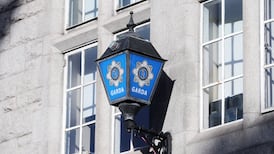THE seizure of 50kg of cocaine in Co Clare on Wednesday represents an undoubted boost for the authorities in their fight against the growing drug trade.
The three agencies involved - the Naval Service, Customs and the Garda - have been at pains to point out that the seizure was due to a combined operation where all three groups co operated with no difficulty.
Even the holidaying Minister for Justice, Mrs Owen, weighed in with a message of congratulation for those involved and a reaffirmation of the value of joint operations.
The head of the Customs National Drugs Team, Mr Liam Hurley, suggested yesterday that there was nothing new in this, insisting that any notions of lack of co operation in the past were merely a "perception" and did not reflect reality.
Whatever of that, the new concern for the authorities yesterday was how much of the haul might have been destined for the Irish market.
The seizure is more than twice the size of the previous largest consignment of cocaine found in the State and is considered far too much for the Irish market alone. The likelihood is that, while some of the cocaine may have found its way to dealers in the Republic, the bulk was destined for Britain or other European countries.
The crew of the vessel, the Front Guider, is believed to have known only that they were heading for Ireland when they left Colombia. It is common practice for cargo vessels to start long voyages knowing only the next destination. New instructions can be sent by radio, while papers concerning the next trip can await the vessel when it arrives at its first port.
It is understood that there were papers ready for the Front Guider when it arrived in Co Clare. These would have sent it on to Norway. However, the authorities believe the cocaine was due to be offloaded in the Republic.
While street prices of cocaine have fallen in recent months, it remains unclear bow popular the drug is in the Republic. The last significant find of cocaine was last March, when £50,000 worth of crack a highly addictive mixture of cocaine and baking soda or similar substances - was discovered at Dun Laoghaire. However, that consignment was being taken aboard a ferry to Wales.
In March, a Garda sergeant from a drug unit in central Dublin told a Dail committee that there was "a possibility, at least, of a serious problem developing in relation to crack cocaine". Sgt John O'Driscoll said that, while crack was not being sold on Dublin streets, cocaine was being baked in users' homes to make the substance.
Meanwhile, in Cork in July, Garda Sgt Michael Fitzpatrick told a court that Garda intelligence suggested quite a large number of people in the city were now using cocaine.
Yesterday the Front Guider continued to unload its coal at Moneypoint as Garda technical experts examined the area where the cocaine was found and a search of other parts of the ship continued.
The hiding place for the drugs - a suspended ceiling in the ship's gymnasium - means that unless fingerprints or other damning evidence is found it may not be possible to link the haul to particular crew members.
Colombian cocaine normally comes to Europe via Jamaica or North America, with a secondary route through Nigeria and into Spain and central European countries. Ships from "source countries" such as Colombia are routinely searched on arrival in Ireland.
However, unless there is specific information about drugs on board, normally only part of a large ship will be searched, and Customs and the next port of call are advised of the sections which have been examined.
The size of the consignment on the Front Guider will reinforce the Government's view that Ireland has become an entrepot for drugs being brought into Europe by major traffickers, some of whom may be based in the State. With this in mind, the Government has suggested it needs EU funding for a coastguard service.
But the operation mounted around the Front Guider points more towards the value of shared information, and co operation with intelligence agencies overseas, than to a need for a coastguard fleet.
The previous largest consignment of cocaine found was a 20kg bale, valued at £2-£3 million, washed up on a beach at Fanore, Co Clare, in February last year.
That consignment - the size of two bales of briquettes - was in waterproof packaging and had apparently been dropped from an oceangoing ship for collection by a smaller vessel later. This is a common method used by smugglers: modern satellite based navigation systems enable the dropping point to be located by both vessels with relative ease.
The close shadowing of the Front Guider by the Naval Service as the Colombian ship approached Ireland indicates that the authorities feared this method might be used.










